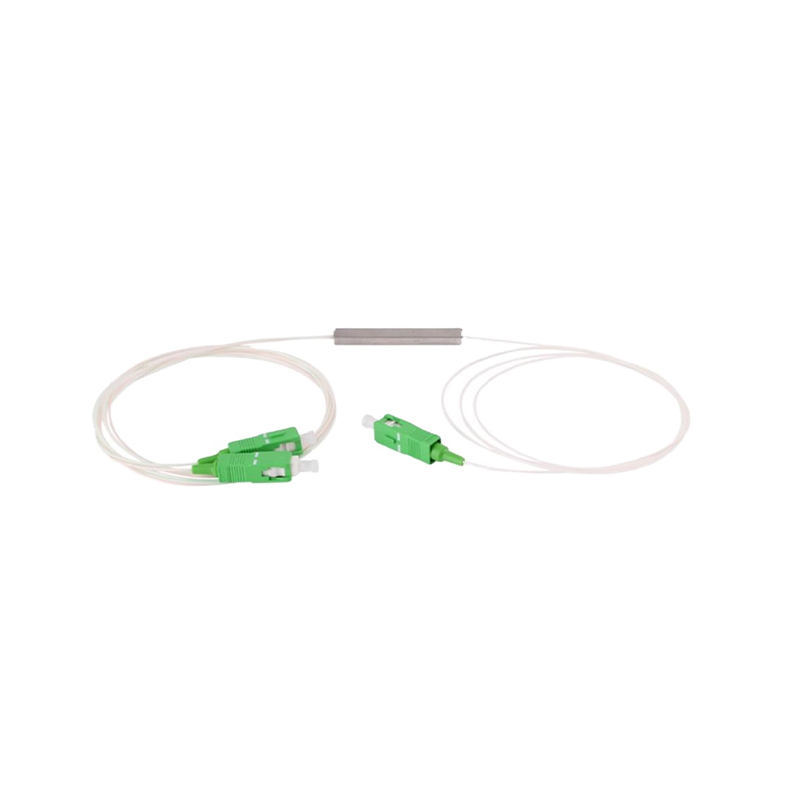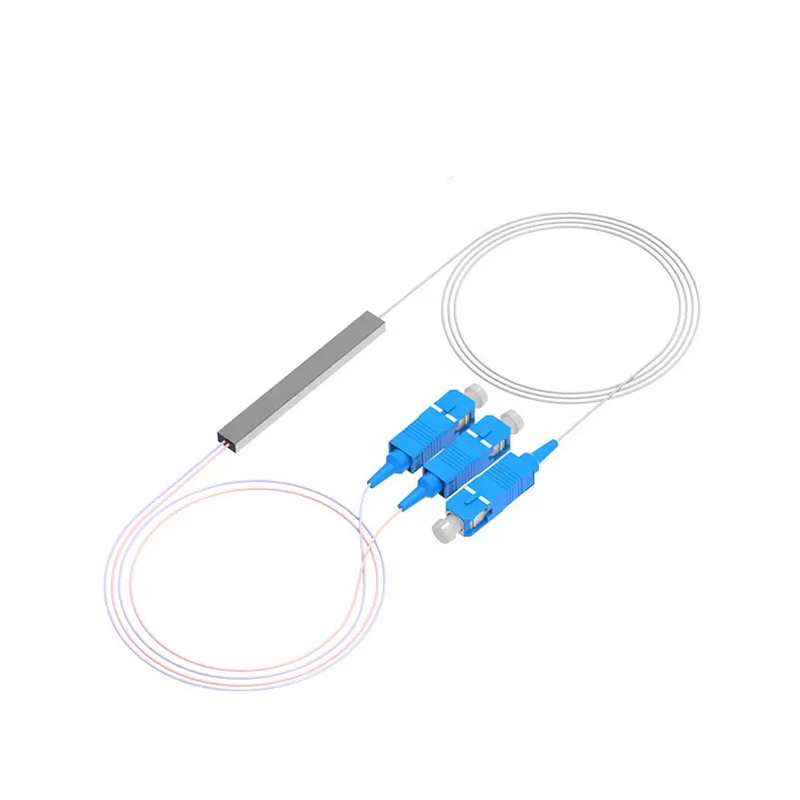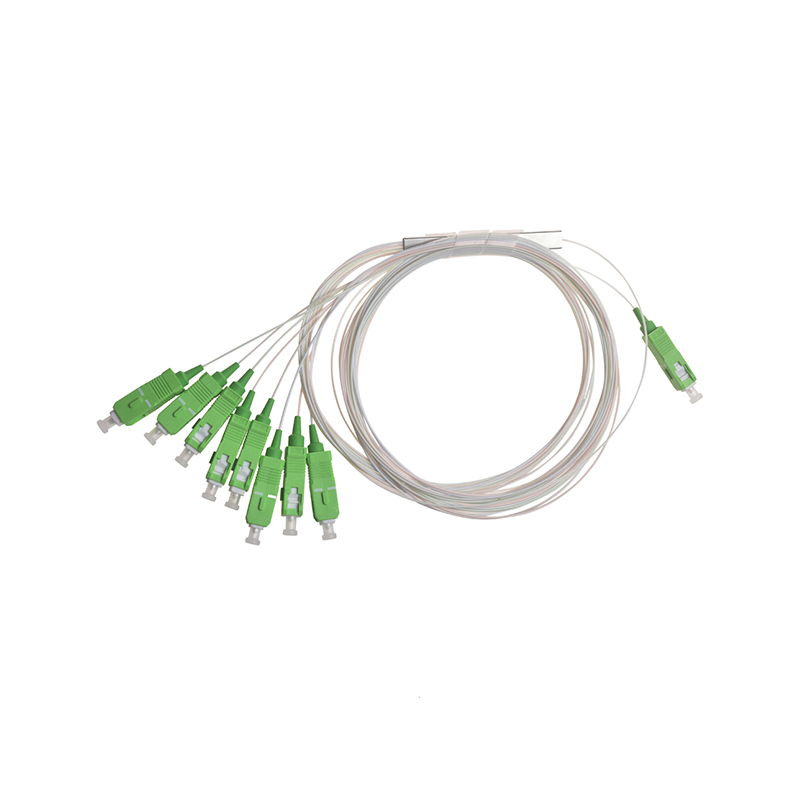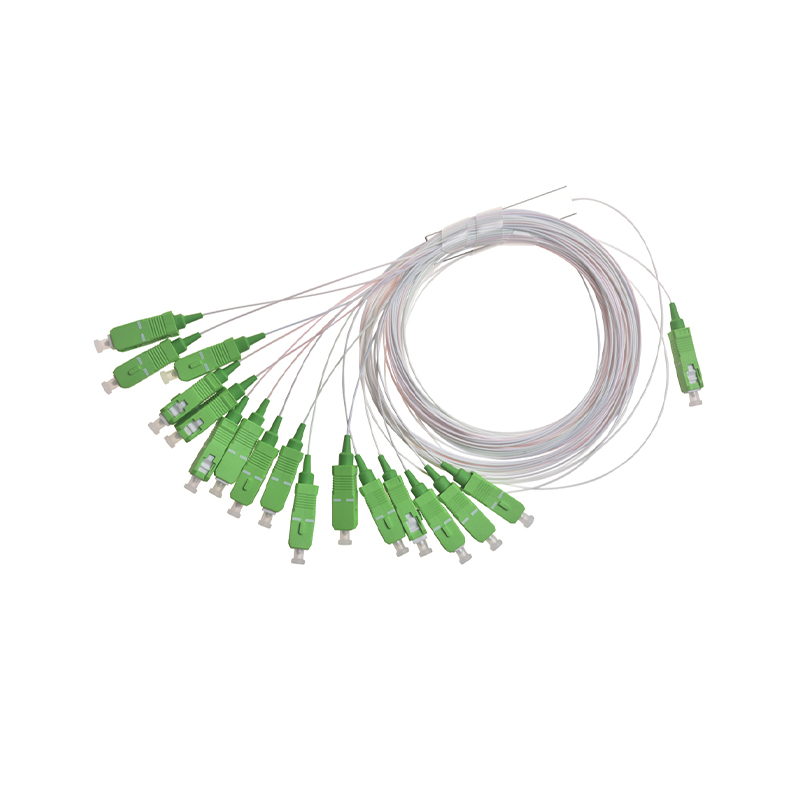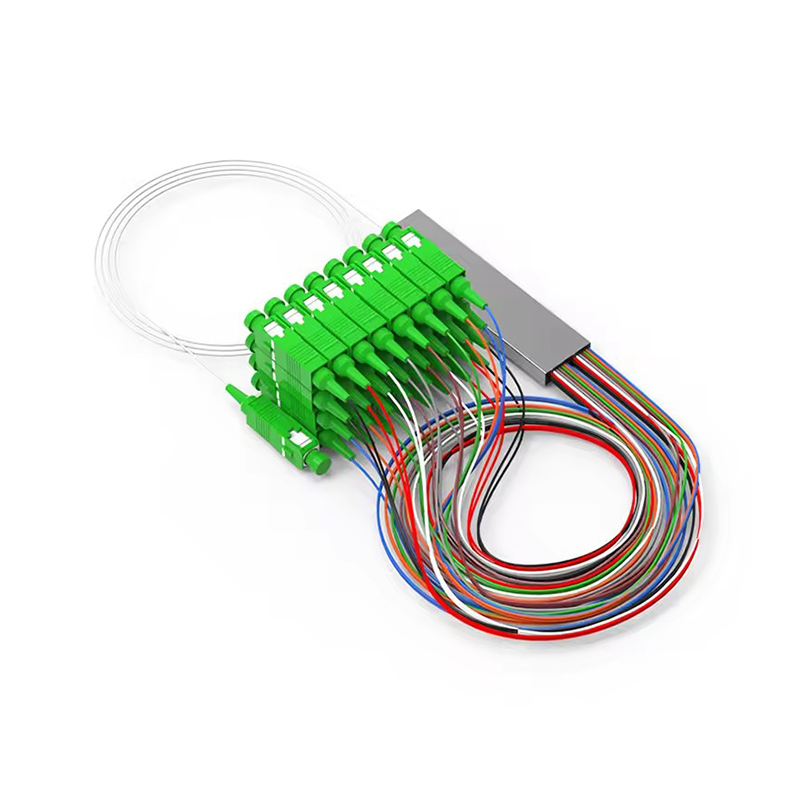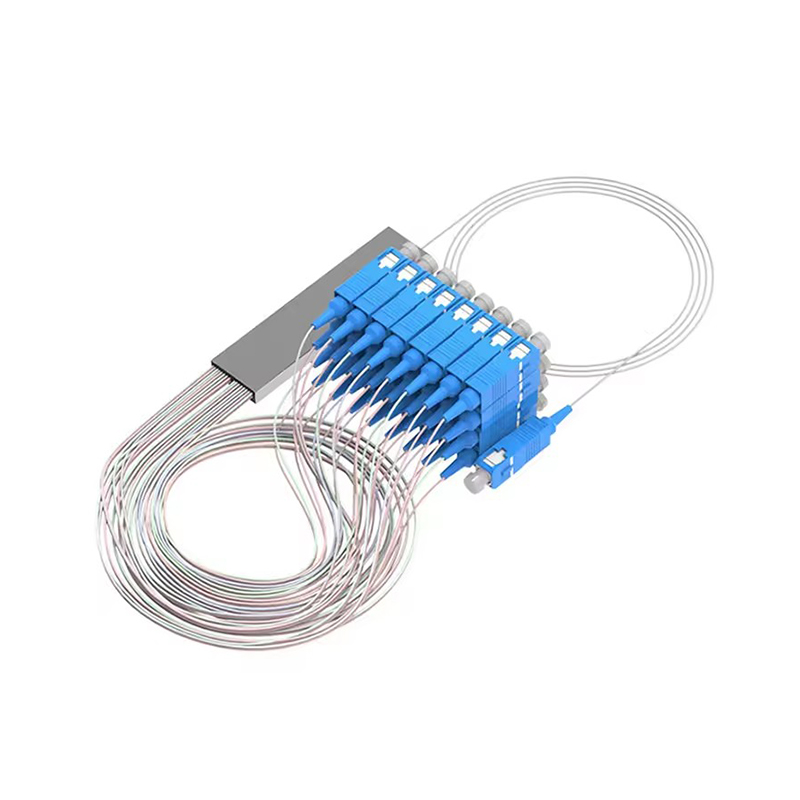Product
- Pre-Connectorized ODN Solution
- Fiber Optic Fast Connector
- Fiber Optic PLC Splitter
-
Fiber Optic Patch Cord
- SC series Fiber Optic Patch cord
- LC Series Fiber Optic Patch cord
- FC Series Fiber Optic Patch cord
- ST Series Fiber Optic Patch cord
- OM1/2 Fiber Optic Patch cord
- OM3 Fiber Optic Patch cord
- OM4 Fiber Optic Patch cord
- Armored Series Fiber Optic Patch cord
- E2000 Series Fiber Optic Patch cord
- Pigtail Fiber Optic Patch cord
- 12 Multi Colors Fiber Optic Patch cord
-
Fiber Optic Cable
- Fiber Optic Distribution Box
- Fiber Optic Splice Closure
-
Fiber Optic Terminal Box
-
ODF Fiber Optic Distribution Frame
- Fiber Optic Accessories
- Fiber Optic Equipment&Tool
Bare Fiber (Mini Module) Fiber Optic PLC Splitter Supplier
Bare Fiber (Mini Module) Fiber Optic PLC Splitter usually adopts bare fiber design without connectors, which is compact and easy to install and maintain.
Based on planar waveguide technology, Bare Fiber (Mini Module) is designed with high precision and reliability, can provide stable signal distribution performance, and is suitable for intensive application scenarios.
During signal transmission, Bare Fiber (Mini Module) has low insertion loss and maintains uniform signal distribution in different wavelength ranges.

Ningbo Goshining Communication Technology Co., Ltd. is an enterprise that designs, produces, and sells a full range of fiber optic products with high-quality and first-class services, which enable us to meet all customers' demands and offer one-stop service. Ningbo Goshining Communication Technology Co., Ltd is a professional Custom Bare Fiber (Mini Module) Fiber Optic PLC Splitter Supplier and OEM Bare Fiber (Mini Module) Fiber Optic PLC Splitter Company, our products include Fiber Optic Fast Connector, Patch Cord, PLC Splitter, Cables, Distribution Box, Splice Closure, and Terminal Box etc. We also offer Customization services to help develop your own brand.
-
Nov 21, 2025_GoshiningIn building high-performance fiber optic communication networks (especially passive optical networks (PONs) such as EPON and GPON), fiber optic PLC splitters (PLC splitters, planar waveguide circuit splitters) are crucial passive devices. M...Read More
-
Nov 17, 2025_GoshiningFrom May 15th to 17th, 2025, Ningbo Goshining Communication Technology Co., Ltd. successfully participated in the 20th China Optics Valley International Optoelectronic Exposition held in Wuhan, with booth number B146. At this exhibition, w...Read More
-
Nov 17, 2025_GoshiningNingbo Goshining Communication Technology Co., Ltd. Showcases at CFCF 2024 Bangkok Ningbo Goshining Communication Technology Co., Ltd. made a grand appearance at the CFCF 2024 International Communications Exhibition in Bangkok, Thailand on ...Read More
Bare Fiber (Mini Module) PLC fiber splitter is a passive optical splitter using planar optical waveguide (PLC) technology. Its package form is a miniaturized module with bare fiber pigtail. The core function is to divide an input optical signal into multiple outputs according to a specific splitting ratio (such as 1x2, 1x4, 1x8, 1x16, 1x32, 1x64, etc.) in a single-mode optical fiber system to achieve optical power distribution. It is a key component of fiber to the home (FTTH), passive optical network (PON) and various fiber distribution systems.
At Ningbo Goshining Communication Technology Co., Ltd., we specialize in delivering end-to-end fiber optic solutions. Our Bare Fiber PLC Splitter exemplifies this commitment, combining cutting-edge PLC technology with compact design to empower FTTH, PON, and optical distribution networks worldwide.
1. Technical principle: based on PLC chip
PLC chip foundation: The core is a planar optical waveguide circuit manufactured on a quartz glass substrate through semiconductor processes (such as photolithography and etching). The optical waveguide structure is precisely designed to achieve coupling and splitting of optical signals.
Branching mechanism: The input optical signal enters the Y-branch or multi-stage cascade branch structure of the PLC chip, and the optical energy is evenly distributed to each output channel based on the physical properties of the optical waveguide (such as mode coupling) (the even-split type is the most common).
Wavelength independence: The PLC splitter has a flat spectral response within the operating wavelength range (usually 1260nm to 1650nm, covering the O/E/S/C/L bands), and the splitting ratio basically does not change with wavelength, which is suitable for a variety of optical communication systems.
2. Technical principle: based on PLC chip
PLC chip foundation: The core is a planar optical waveguide circuit manufactured on a quartz glass substrate through semiconductor processes (such as photolithography and etching). The optical waveguide structure is precisely designed to achieve the coupling and branching of optical signals.
Branching mechanism: The input optical signal enters the Y-branch or multi-stage cascade branch structure of the PLC chip, and the optical energy is evenly distributed to each output channel based on the physical properties of the optical waveguide (such as mode coupling) (the even-split type is the most common).
Wavelength independence: The PLC splitter has a flat spectral response within the operating wavelength range (usually 1260nm to 1650nm, covering the O/E/S/C/L bands), and the splitting ratio basically does not change with wavelength, which is suitable for a variety of optical communication systems.
3. Structure and packaging characteristics (Bare Fiber Mini Module)
Compact miniaturization: The miniaturized packaging design (typical dimensions such as L100 x W80 x H10 mm or smaller) significantly saves space, especially suitable for high-density wiring environments (such as optical fiber distribution frames ODF, optical cable junction boxes).
Bare fiber pigtail: The input/output end is a standard single-mode optical fiber with a buffer layer (usually G.652.D), and the end is led out in the form of bare fiber. This design provides flexible connection methods:
It can be directly connected to the field optical fiber through fusion splicing (Fusion Splice) to achieve low-loss, high-reliability permanent connection.
It can be temporarily connected to the patch cord with connector through mechanical splice or adapter.
Typical components:
PLC splitter chip (core component)
V-groove array (precisely aligns and fixes input/output optical fiber)
Metal or polymer packaging box (provides physical protection)
Input/output bare fiber pigtail (with color-coded identification)
Mounting bracket or fixing hole (for easy installation and fixation in the equipment)
4. Key performance parameters
Split ratio: Defines the number of output channels of the splitter (such as 1x8) and the power distribution ratio under ideal conditions (8: 12.5%/channel for equal distribution). There is actually insertion loss.
Insertion loss (IL): The optical power loss of a specific port pair (input port to specified output port) in decibels (dB). The typical value increases with the number of splits (for example, the theoretical loss of each channel of a 1x8 equalizer is about 10.5 dB, and the actual value is slightly higher).
Uniformity: The maximum difference in insertion loss of all output ports (dB). Measures the consistency of loss at each output port. The smaller the value, the better.
Polarization Dependent Loss (PDL): The maximum change in insertion loss caused by changes in the polarization state of the input optical signal (dB). The smaller the value, the more stable the performance (usually <0.3dB).
Directivity/Return Loss (RL): Measures the ability of the splitter to isolate the reflected light at the input end (the negative logarithm of the ratio of the reflected light power at the input end to the input light power, dB). The larger the value, the better (usually >50dB).
Operating Wavelength: Usually specified as 1260nm to 1650nm.
Operating Temperature: Common commercial grade (0°C to +70°C), industrial grade (-40°C to +85°C) and other specifications are available.
Storage Temperature: Usually wider than the operating temperature range.
5. Main Application Scenarios
Fiber-to-the-Home (FTTH) Network: In passive optical networks (PON) such as GPON, EPON, XG-PON, 10G-EPON, it serves as an optical power distribution node between the optical line terminal (OLT) and the optical network unit (ONU) (usually in the optical distribution point ODP or optical distribution frame ODF).
Fiber optic local area network (LAN/CATV): Used in fiber optic distributed systems within buildings and campuses to achieve multi-point transmission of signals.
Test and sensing systems: Distribute light sources or signals in laboratories or distributed fiber optic sensing (DAS/DTS) systems.
Mobile Fronthaul/Backhaul: Realize signal aggregation and distribution in the optical fiber connection of 4G/5G base stations.
6. Advantages and Features
High reliability/long life: Passive devices, no electronic components, no power requirements, and long mean time between failures (MTBF).
Good environmental stability: Relatively insensitive to changes in temperature and humidity (especially compared to FBT splitters).
Compact and lightweight: Mini Module design greatly saves space and simplifies wiring management.
Wide wavelength range: A single device supports multi-wavelength system applications.
Bare fiber flexibility: Supports fusion splicing (low loss, high reliability) or multiple splicing methods to meet different engineering needs.
High channel consistency: PLC technology ensures good uniformity between output ports.
7. Selection and installation considerations
Clear requirements: Determine the required splitting ratio (1xN), center wavelength (usually broadband does not need to be specified), and operating temperature level (commercial/industrial grade).
Fiber type matching: Ensure that the splitter pigtail fiber type (usually G.652.D) matches the system fiber type.
Performance parameter confirmation: Pay attention to whether key parameters such as maximum insertion loss, uniformity, PDL, and RL meet the system link budget requirements.
Installation environment: Select products that meet the expected operating temperature range. Pay attention to moisture and dust prevention and avoid physical extrusion.
Fiber operation:
Fusion: It must be performed by professionals, following the standard fiber fusion process to ensure that the loss at the fusion point meets the requirements. The fiber end face must be cleaned before fusion.
Fiber coiling management: The fiber after fusion or splicing must be properly coiled and fixed in the distribution frame/box to ensure that the fiber bending radius is greater than its minimum allowable bending radius (usually >30mm or as required by the fiber specification) to avoid macrobending losses.
Protection: The fusion point or mechanical splicing point must be protected with a heat shrink protective sleeve or a special protection box.
Connector use (if applicable): If connected through an adapter, ensure that the connector end face is clean to avoid contamination and high loss.
Why Choose Goshining’s PLC Splitters?
End-to-End Customization: Tailor split ratios, fiber type/length, and packaging for your brand (OEM/ODM supported).
One-Stop Fiber Ecosystem: Pair splitters with our fiber connectors, patch cords, distribution cabinets, and splice closures for seamless integration.
Quality Assurance: ISO-certified manufacturing with full traceability and 100% optical testing.
Choosing Ningbo Goshining not only gives you reliable fiber optic products, but also professional support and services that focus on meeting your needs. Let us work together to provide a solid and efficient connection foundation for your fiber optic network construction.

